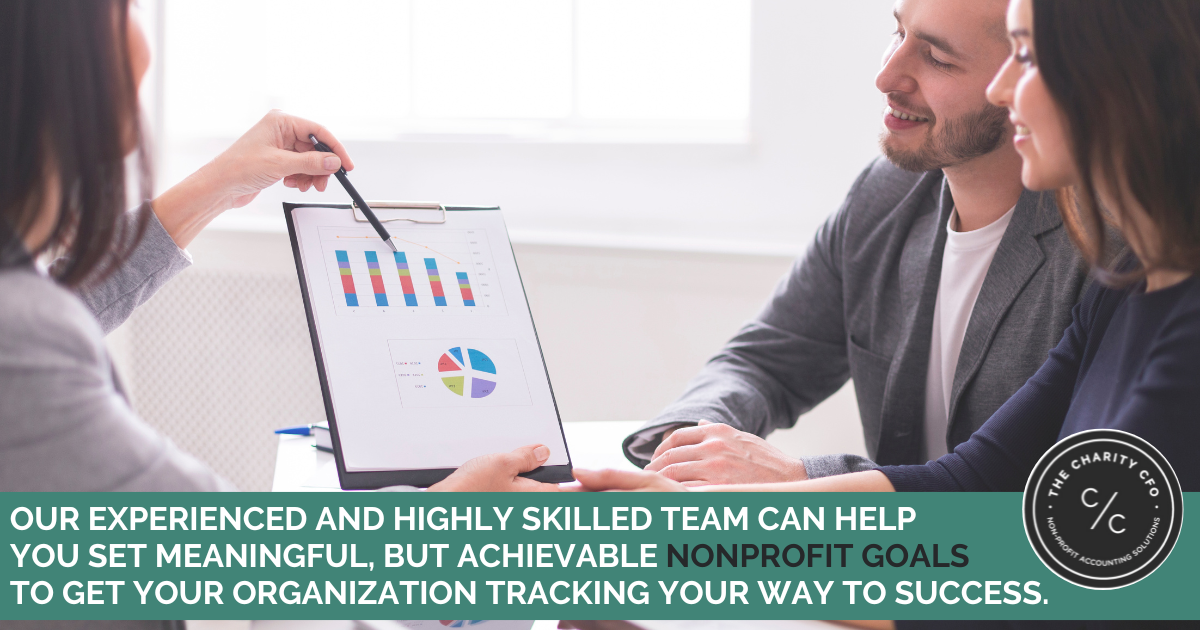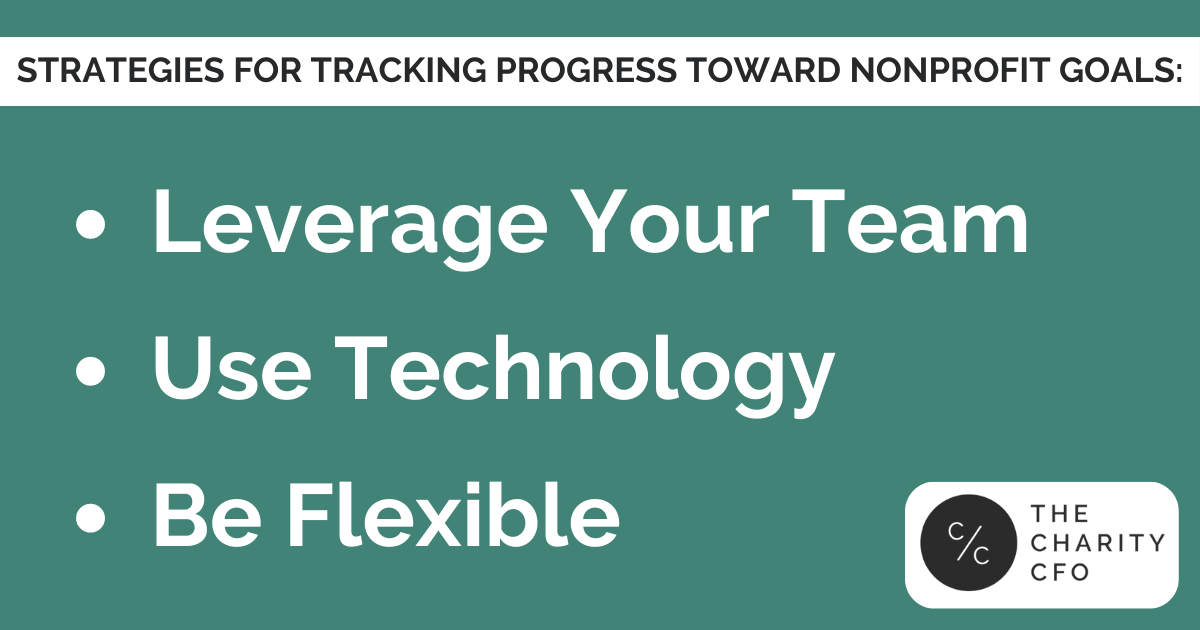Setting nonprofit goals is critical to growing in a manageable way that supports your mission and employees.
And one of the most vital steps toward reaching those goals is setting up the proper system to track key aspects of your progress. Let’s take a closer look at everything you need to know to define and track your nonprofit goals.
Categories of Nonprofit Goals
Nonprofit goals can be split into three broad categories:
- Programmatic
- Financial
- Operational
Programmatic goals are ones that deal with your organization’s services, whether it’s sheltering animals, providing food for the homeless, raising environmental awareness, or any other services contributing to the greater good.
Financial goals align with your nonprofit’s fundraising and expenses.
Operational goals cover internal issues like staffing, efficiency, improved management, and other factors that contribute to keeping your organization running.
While programmatic goals may be the most alluring, your attention should also be on the other categories, which are vital for keeping your nonprofit moving forward.
Setting Mission-Focused Nonprofit Goals
No matter the category, your nonprofit goals should always tie back into your organization’s mission and vision. Pausing and allowing leaders and stakeholders to frequently re-assess the goals is key to keeping them on track. Clarity and focus at this stage can provide major benefits down the line.
For the best results, nonprofit goals should align with the “SMART” goal-setting strategy.
- Specific
- Measurable
- Achievable
- Relevant
- Time-bound.
Specific and measurable goals make tracking more straightforward, while the reasoning behind relevant and achievable goals should be obvious. Finally, adding a time element creates urgency, accountability, and motivation.
Tracking Nonprofit Goals
Have you ever heard the saying, “If you can measure something, you can manage it”?
Well, this definitely applies to nonprofit goals.
Without setting up a robust, reliable, and accurate tracking system or method, it’s impossible to know whether you’re making progress or if your plans need to be adjusted. However, when you appropriately track your goals, you can see the impact of different techniques or decisions, as well as enjoy the satisfaction of seeing tangible progress toward improvements.
The most common way to track your goals is to decide on key performance indicators, often referred to as KPIs. KPIs are the measurable factors that represent progress toward your goals.
For example, a nonprofit with a financial goal of increasing fundraising by 10% this year can set KPIs like the number of fundraising events, amount of calls or letters to donors, the number of new recurring donors each month, or even the total of the revenue brought in to date.
It’s important to note that your KPIs will vary by the nature of your goals and organization. Still, the most essential factor is that they are a direct representation of your organization’s idea of success.
Strategies for Tracking Progress Toward Nonprofit Goals
As you begin defining and tracking your organization’s goals, take the opportunity to implement practices that will make the process easier in the future.
Leverage Your Team
As a nonprofit team member, you understand the crucial role each person plays in growing your mission. So when it comes to tracking progress toward your goals, team member involvement is critical. Check in with them regularly to ensure they understand:
- How the goals apply to the mission
- What their role is in achieving the goal
- How they should be measuring progress
Stakeholders, from the board and donors to employees, can help prioritize goals and allow leaders to zero in on the ones that are most critical to success moving forward.
Use Technology
Technology is another key element in tracking progress toward nonprofit goals. You can use accounting software, fundraising tools, CRM’s, and other services to collect and analyze data. With this data, you can make more informed decisions for your organization.
Be Flexible
Things change and it’s okay if your goals need to change as well. If you notice you’re continuously off-track with your goals, identify the areas you are falling short and make adjustments.
Remember not to see these changes as a failure but as a step toward pushing your organization where you hope it can be.
Reach Your Nonprofit Goals
Without clear, achievable goals, it’s easy to see how an organization can drift away from its core mission and values.
Fortunately, with the right resources, it’s simple to:
- Set goals
- Develop a plan to reach them
- Monitor your progress along the way
However, it can be tough to find time for this kind of long-term planning in the busy world of a nonprofit, especially new or growing organizations.
That’s why The Charity CFO team is here. Our experienced and highly skilled accountants can help you set meaningful, but achievable nonprofit goals to get your organization tracking your way to success.
Contact us today to learn more about the financial services we offer nonprofit organizations!

Do You Struggle to Make Sense of Your Financial Statements?
Get our FREE GUIDE to nonprofit financial reports, featuring illustrations, annotations, and insights to help you better understand your organization's finances.
Get the free guide!



0 Comments